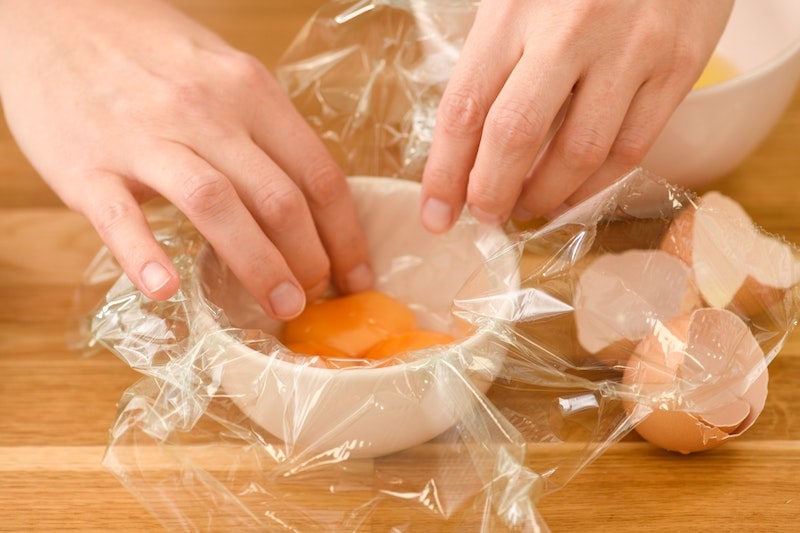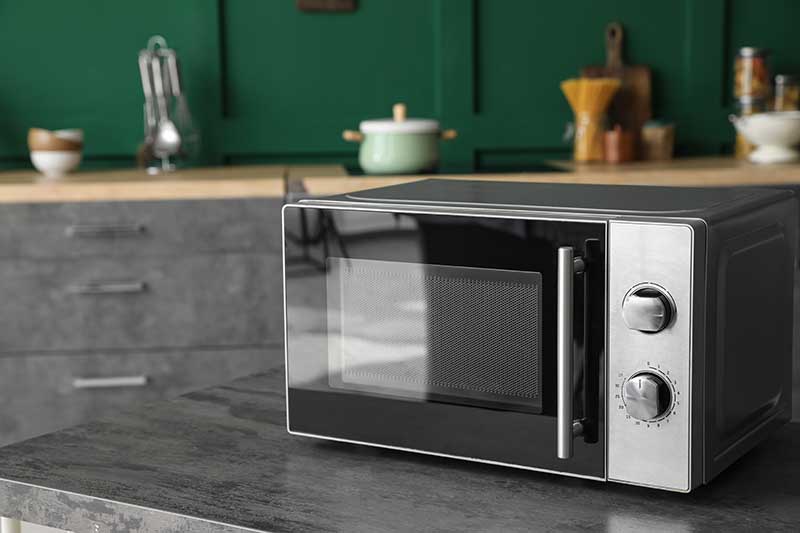Can You Microwave Saran Wrap? (Microwave Safety Tips)
-
Codee Chessher
- Last updated:

Plastic is a very versatile material, despite its detrimental effects on the environment. Everyone knows and loves Tupperware, which is perfectly safe to use in the microwave. Other types of plastic are more questionable, like plastic Saran or cling wrap. We know it’s great for keeping food fresh, but is it microwave safe?
With some caveats, yes, most plastic food wrap is safe to use in the microwave. It even has some notable benefits for cooking or reheating certain foods! Let’s check out some more info about using plastic wrap in the microwave, including what types to look for, when to use it, and more.
About Using Plastic Wrap in the Microwave
The trick to using plastic wrap in the microwave is to choose one that has a microwave-safe label on it. This symbol may just be the words, “microwave safe” or there may be a microwave symbol with some wavy lines underneath. Either way, those mean the plastic wrap in question is safe to use in the microwave.
Another catch is that according to the FDA, plastic wrap is food and microwave safe, but only if the plastic isn’t touching the food. Microwaves work by exciting the water molecules inside food, and plastic wrap isn’t affected by microwave rays unless it’s directly touching food being heated.
You want to avoid using plastic wrap that doesn’t have a microwave-safe label on it, which may be either cheap plastic wrap or merely plastic wrap designed for other purposes. You should also opt for intact plastic wrap in good condition, as torn plastic wrap or wrap with holes in it could catch fire or melt in the microwave.
Plastic wrap is especially useful for reheating food where moisture content is a concern. For instance, it’s very easy to cook the moisture out of pasta and chicken dishes when cooking them uncovered. Plastic wrap helps keep the moisture in your food instead of evaporating as steam.
There are a few other tips about using plastic wrap to reheat food, which we’ve compiled in a handy bulleted list below. Let’s check ‘em out.
- To avoid mishaps when using plastic wrap, consider lowering your microwave’s power level to medium or low.
- Avoid reheating fatty foods with plastic wrap as a covering. Pork is the worst offender, and hot oil could pop holes right in your plastic wrap and cause a fire.
- Avoid using plastic wrap to reheat sugary foods, as the sugar will melt plastic if it comes into contact.
- For situations where plastic wrap is inadvisable, we suggest using either a plain piece of paper towel or a microwave-safe lid instead.
Plastic Wrap and Food Safety

Plastic wrap was originally made of PVC because it was very stretchy and clung well, but over time, we discovered that it leeched harmful compounds called plasticizers into the food that it touched. Plasticizers have been the subject of numerous scientific studies, which have linked the compounds to a higher risk of neurological, reproductive, cardiovascular, and other serious diseases.
Once this information became apparent, companies swiftly reformulated their plastic products, including cling wrap, with a particular focus on food safety. Some sources allege that some popular cling wrap brands today have low levels of toxic chemicals like BPA and plasticizers.
There’s not really any conclusive proof of that yet, but considering plastic’s sketchy history, we’d advise caution when using Saran cling wrap. Most authorities recommend keeping an inch between the wrap and your food, so be careful to bear that in mind so you don’t overload food containers when reheating.
Conclusion
Plastic wrap has had a dubious history, but it’s generally safe to use for reheating food in the microwave. It’s especially great for maintaining moisture in food, but be careful and check the label to see if it’s microwave safe, leave an inch between the food and wrap in the microwave, and maybe turn the power setting down, just to be safe.
Featured Image Credit: Backen.de, Pexels
